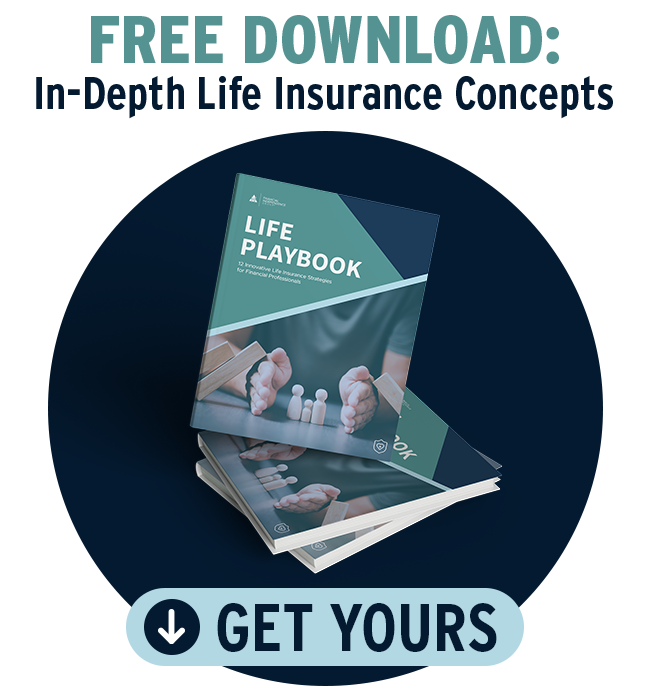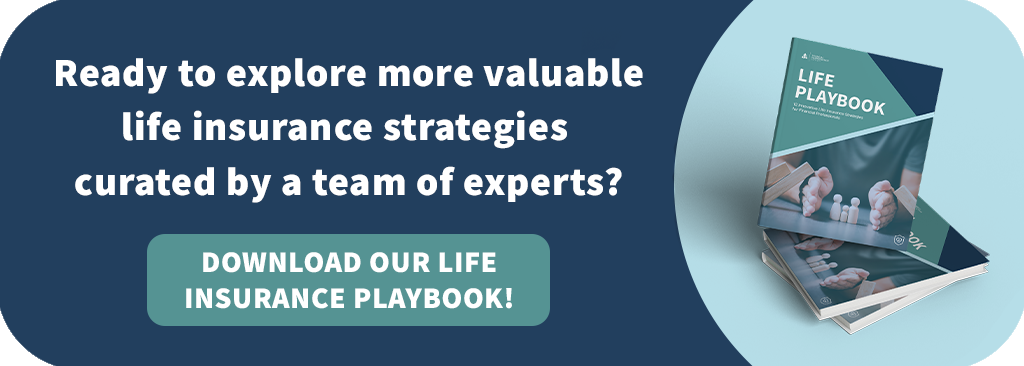Updated August 6, 2024, at 3:14 PM
The unique features of life insurance make it a strong vehicle for achieving additional income distributions in retirement. When overfunding an index universal life (IUL) policy or a whole life policy, there are no contribution limits, the cash value grows tax-deferred, and income can be taken tax-free.
Additionally, there’s protection from market risk, unlike other investments, and living benefit riders. The actual death benefit can also help protect the entire portfolio and the risk of long-term care (LTC) expenses eroding their nest egg.
Let’s dive into the ideal client profile, key selling points, a case study, and more on the topic of implementing life insurance as part of a retirement plan.
Ideal Client Profile
The ideal client to use life insurance as part of a retirement plan is vast. To start, ideally a client is between the ages of 25-60, needs life insurance and seeks additional retirement income, even if retirement is 15 or more years away.
They may also have met contribution limits for other plans, be risk-averse, seek a tax-advantaged solution, or be concerned about future tax rates and market exposure.
Key Selling Points
- Death benefit protection can offer stability during working years
- Potential tax-free income stream at retirement is possible through loans or withdrawals on policy cash value
- Cash value grows tax-deferred
- Income can be taken income-tax-free via withdraws to basis and/or policy loans
- Can lower client’s effective tax rate or tax bracket as distributions aren’t treated as taxable income, and there’s potential to keep more Social Security income
- LTC, chronic illness riders, or accelerated death benefits can provide access to the pool of money if the insured develops a qualifying illness
- Overloan protection (OLP) riders can prevent the policy from lapsing later in life and causing a taxable event
- Various policy loan options are available
Related: Life Insurance Policy Reviews for Clients [CAR Program Overview]
Life Insurance in a Retirement Plan Case Study
A 45-year-old healthy male is looking for additional tax-effective strategies. He wants to put money away for retirement income and has maxed out his 401(k) and Roth IRA contributions. Life insurance has no contribution limits and can provide unique tax advantages if the policy’s designed as a non-MEC.
He decides to put $12,000 per year for 20 years into an IUL product with an increasing death benefit option. Then, it switches to level after the 20-year funding period. Desired distributions are expected to start at age 70, and, at the current illustrated rates, an annual income of $33,293 is projected.
This income equals $43,807 of annual taxable income, assuming a 24% income tax bracket. The death benefit also provides a tax-free amount to heirs over and above the cash value in the policy. An available chronic illness rider can give access to funds if needed for care expenses.
Client Comments to Watch for This Strategy
Have clients that may benefit from using life insurance as part of a retirement plan? These are some comments to be on the lookout for to know that it could be a viable option:
“I want to save more for retirement, but I’ve contributed all I can into my Roth IRA/IRA/401(k).”
“I’m worried tax rates will go up, and I wish there was a way to receive income without increasing my tax bracket.”
“I don’t want all my retirement income subject to market risk and taxes.”
“I’m worried about what happens to my nest egg when I die or need long-term care.”
Related: Compare Insurance Offerings With Life Insurance Policy Reviews [Case Study Included]
Right Questions to Ask
Even if your clients aren’t making those comments, there are questions you can ask as the financial professional to spur the discussion to get them thinking about life insurance in retirement planning. You could try asking a few of the following questions:
“Did you know life insurance had tax advantages 50–60 years before anyone thought of IRAs, 401(k)s, or other retirement planning strategies?”
“Do you think income-tax rates will go down or up?”
“What if you could establish a plan of your own to supplement the retirement planning strategies offered through your employer?
“What if you could implement a secondary retirement strategy that provided flexibility to help you time distributions to minimize exposure to taxes?”
“Would you be interested in a secondary retirement plan that included protection against premature death and long-term-care expenses?”
Final Thoughts
Life insurance can create additional income distributions in retirement. It can also be a viable option for clients that want to put more money away while saving on taxes.
If you’re interested in learning more about strategic life insurance strategies, click below to download our FIG Life Playbook that offers ten life insurance concepts you can implement.
Keep Reading: Is Cash Value Part of the Death Benefit? [Infographic]
FOR FINANCIAL PROFESSIONAL USE ONLY.
Not intended for use in solicitation of sales to the public. Not intended as a recommendation of any specific product or strategy for clients or a class of clients. Products offered through Financial Independence Group may not be available in all states.



